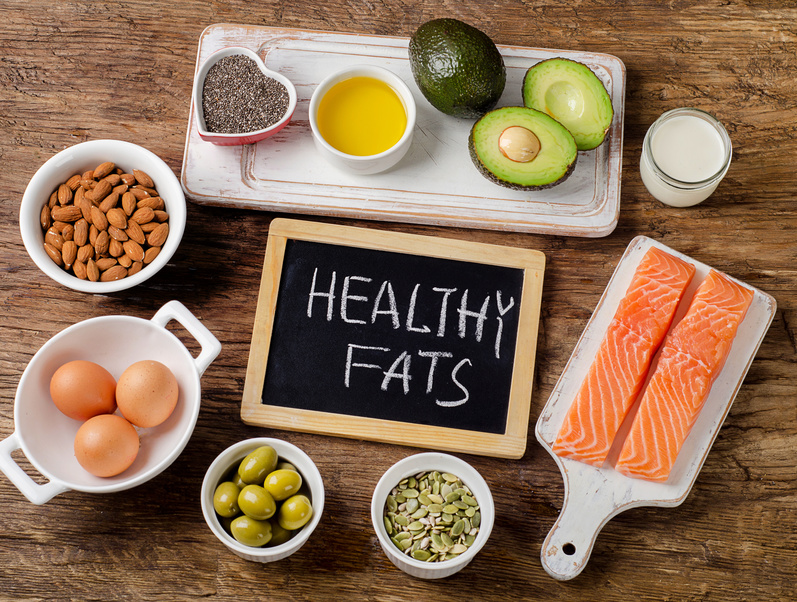

What’s the skinny on FAT
Posted on January 13, 2018 by Dr. G
It seems we are going against conventional wisdom when we say “High Fat, High Health”. That’s because conventional wisdom is WRONG. When it comes to what we’ve been told by marketers of food products, public service announcements, the American Heart Association, American Diabetes Association, American Dietetic Association, your family doctor, your cardiologist, etc. The list is very long.
The science is in, and it is indisputable. When the science is read in the context of how our body functions in order to be “healthy” rather than “not sick”, we make different decisions. One should not make decisions in order to avoid specific diseases, rather one should make decisions to live life as healthy as possible so that today is a great day and tomorrow is a great day. When improving your health and thriving as a human being is the goal, the context changes and the science changes meaning.
For the nearly half century that I’ve been alive, we were not only told that low fat is best, we were also told that the good fats were unsaturated and the bad fats were saturated. This too has been turned upside down. The truth is that there are very unhealthy saturated fats and there are very healthy saturated fats. Likewise there are very unhealthy unsaturated fats and very healthy unsaturated fats. The recipes in this book concentrate on the healthy fats of all types poly-unsaturated fats (PUFA’s), mono-unsaturated fats (MUFA’s), Omega fat and saturated fats.
For simplicity sake, there are 3 major reasons we eat food. We use the food we eat for the purpose of energy production, growth and healing / repair. One of the differences between children and adults is the fact that children both grow and repair whereas adults are mainly focused on repair and maintaining the growth we achieved earlier in life. The energy, growth and repair needs of children are far greater than those of us in middle age and beyond. Yet the dietary habits of an 18 year old, a 49 year old and a senior citizen is not much different in this country (breakfast, lunch, dinner, snacks in between, dessert)
Carbohydrates and protein put our bodies into an anabolic state, (energy storage, growth and repair). Body fat is what we make when we have excess carbohydrates and protein intake. Dietary fat, however when not consumed with high amounts of protein or carbohydrates, does not stimulate the anabolic state as much because fat does not, for the most part, release anabolic hormones like insulin; protein and carbohydrates do.
As adults we need the minimum amount of carbohydrates in our diet as is necessary to fulfill our energy needs (which is far less than when we were 18 years old). We also need a minimum amount of protein to maintain muscle mass and strength (so we don’t lose what we gained in our youth, remember exercise is necessary throughout our lives) and we need protein to repair tissues, replace cells and produce enzymes.
All of our cells and cell components are replaced constantly, no part of you is likely to be over several months old. For example all of your red blood cells under the best conditions live for 120 days, your GI tract is brand new every 3-12 weeks, Essentially 40% of your stool are dead cells that need to be replaced. Protein serves this repair and maintenance function.
For both protein and carbohydrates I say we need the minimum amount of each, because anything more than that puts us in an excessive anabolic state, forcing us to store more energy, as fat, and to grow and repair more tissues, beyond their minimum requirements.
When growth and repair is in excess it can result in unnecessary degenerative changes to our joints like large bone spurs that form in our spine, knees and hips resulting in an “arthritic” inflammatory state. Over activity of our immune system, which is our healing and defense system and leaves us prone to autoimmunity, narrowing arteries and cardiovascular disease. Finally, what is the one cell type in your body that we do not want growing out of control? Cancer.
Over activity of our growth healing and repair mechanisms (inflammation) yields the chronic diseases that result in 85+% of our nation’s health bill; cancer, heart disease, diabetes, stoke, obesity and neuro-degeneration (Alzheimers and Parkinsons).
So if we eat the minimum amount of carbohydrates and the minimum amount of protein we need, then what is left? FAT.
For 50 years we’ve been afraid of eating fat. Since before 1970 our nation been on a low fat diet and our health-span has dramatically declined (I do not focus on average life span, I focus on health span, which has clearly been on the decline for several decades.). Health span is the number of years you spend without chronic disease, the need for medicine and able to carry out your activities of daily living and more importantly, the things you do that make you happy, without assistance or modification.




